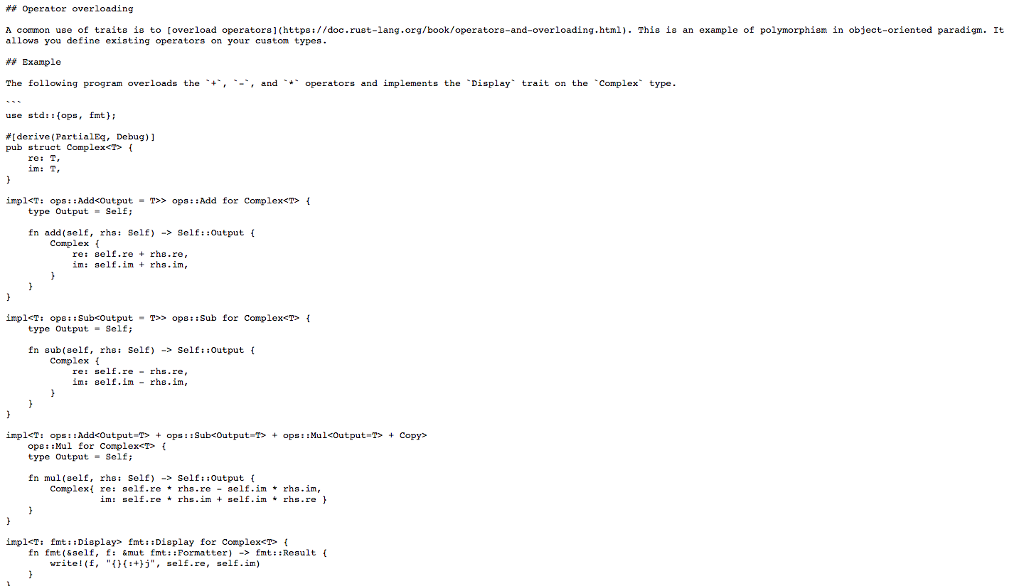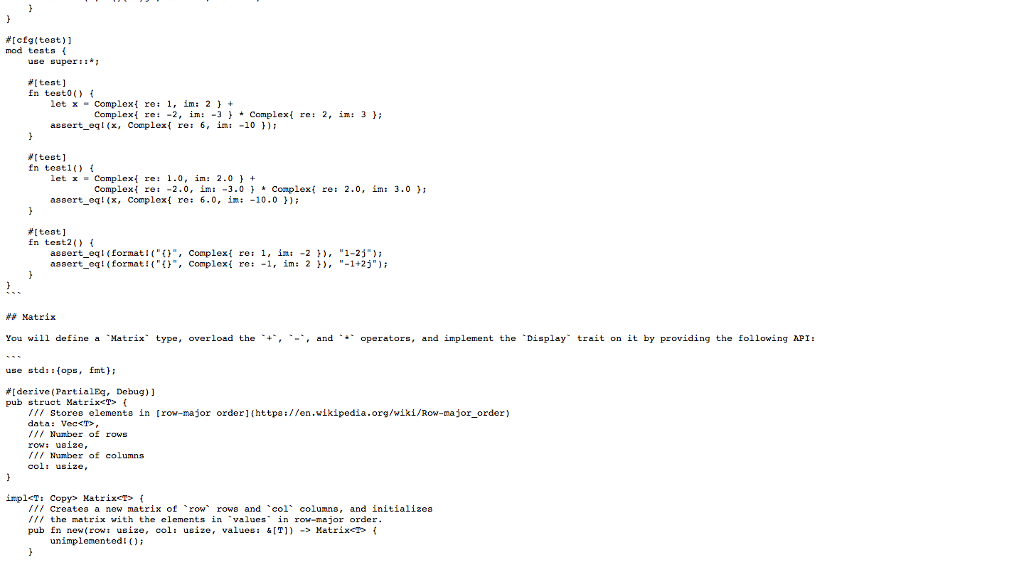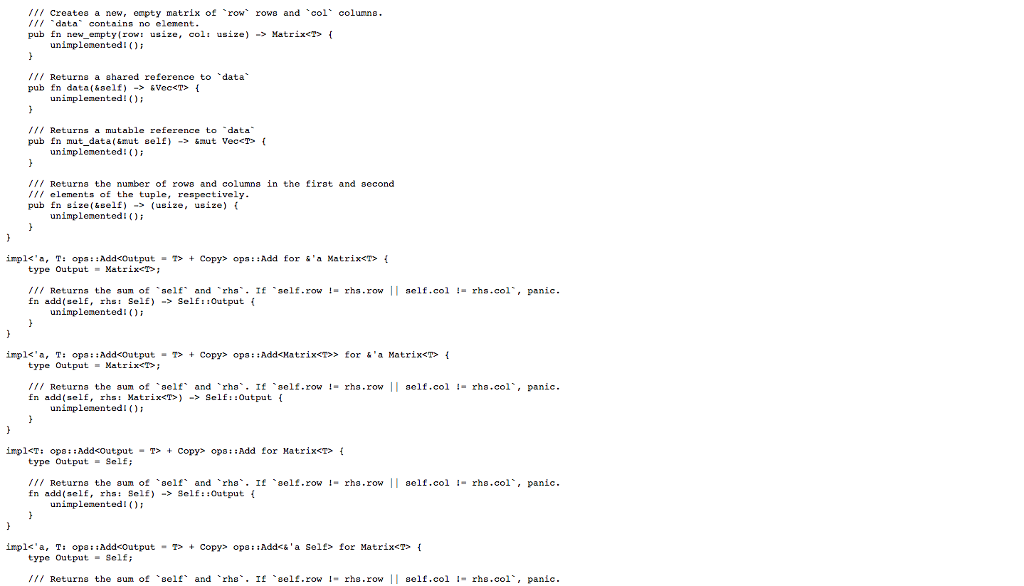Answered step by step
Verified Expert Solution
Question
1 Approved Answer
USE RUST LANGUAGE ONLY! Thank you Operator overloading A common use of traite is to [overload operatorsl (https://doc.ruat-lang.org/book/operatora-and-overloading.html Thia ia an example of polymorphiam in
USE RUST LANGUAGE ONLY! Thank you




Step by Step Solution
There are 3 Steps involved in it
Step: 1

Get Instant Access to Expert-Tailored Solutions
See step-by-step solutions with expert insights and AI powered tools for academic success
Step: 2

Step: 3

Ace Your Homework with AI
Get the answers you need in no time with our AI-driven, step-by-step assistance
Get Started


